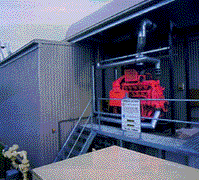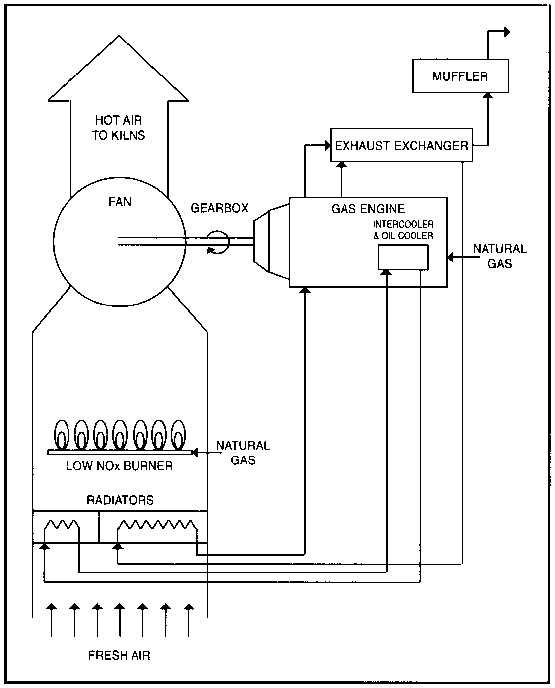
Adelaide Malting is using natural-gas cogeneration as an energy-efficient alternative to electricity-powered malt drying technology. As well as replacing electricity as the power source, cogeneration has boosted plant capacity by 20 percent.
Adelaide Malting, part of the Coopers Brewery Group of Companies, produces barley malt for the local, interstate and overseas beer-brewing industry.The company operates from modern facilities at Cavan, about 10 kms north of Adelaide, South Australia. It has a full-time staff of 20, an annual turnover of $20-25 million, and is the third largest maltster in Australia. Current annual production of malted barley is 64,000 metric tonnes (mt).
Adelaide Malting is the first maltster in Australia to be accredited with the ISO 9002 quality systems accreditation.
In the malting process, barley undergoes steeping (soaking), germination and kilning (drying).Adelaide Malting has two production units on the one site, which both utilise common barley and malt storage, barley and malt cleaning, steep water and refrigeration facilities.
Plant No.1 operates at its designed capacity of 24,000 mt per annum. Plant 2 has four germination boxes giving a capacity of 40,000 mt per annum.
Computerised facilities ensure that humidity and temperature produce ideal germination rates. As well, daily batch analysis of malt in process ensures that the resultant product will contribute most efficiently to the subsequent brewing process.
In kilning, fans blow large volumes of air, preheated to 70 to 80 degrees Celsius, to remove water from wet grain.
Prior to installation of cogeneration, air was heated by a natural gas direct fired Low Nox burner system and blown through the grain beds using three, 70 kW electric fans.

Cogeneration plant
A detailed study by the local gas supply company (The Gas Company) into using cogeneration to drive the fans and partly heat the drying air, concluded that the most cost effective approach was to direct drive the major fan on the site using a gas engine.Unlike most common cogeneration applications producing electricity and heat, the application uses a gas powered engine fitted with heat recovery to directly drive a single large fan. This replaces three electrically driven fans, reducing the maximum electrical demand of the site by 210 kW and increasing processing capacity by 20 percent.
Heat recovered from the unit reduces the firing rate of the gas burner by about 15 percent.

Cogeneration system
The system recovers almost all the energy input to the engine. The only heat lost is that radiated from the engine and gearbox surfaces and the loss in the 120 degree Celsius exhaust gases. The overall efficiency of the plant, including mechanical shaft work, is approximately 90 percent.The process operates continuously, except for a few hours each month when engine oil is changed and preventative maintenance carried out.
|
Cost |
$175,000 |
|
Payback Period |
2‡ years |
|
Annual Savings: |
|
Given the electrical constraints of the site, cogeneration was a natural choice when considering ways of expanding plant capacity.Adelaide Malting is continually striving to improve the efficiency of its operations and the quality of its product. Cogeneration was one element in this on-going improvement strategy.
No barriers were encountered. The plant was designed and built by The Gas Company. Adelaide Malting specified and installed the fan and associated duct work connections.The Gas Company provides a comprehensive maintenance service, which includes regular servicing and preventative maintenance, 24 hour callout service and major overhauls.
Mr Bill Gill
Managing Director
Adelaide Malting Pty. Ltd.
30 Cardiff Court
Cavan
SOUTH AUSTRALIA 5094
Ph: 61 8 8349 6155
Fax: 61 8 8349 4321Case study coordinated by the Environment Management Industry Association of Australia (EMIAA), April 1998.
![]()
The Cleaner Production Case Studies Directory is part of EnviroNET Australia.
- For more information contact:
Environment Australia
Environment Protection Group
PO Box E305
KINGSTON ACT 2604
AUSTRALIA
Email: cproduction@ea.gov.au
URL: http://www.environment.gov.au/net/environet.html